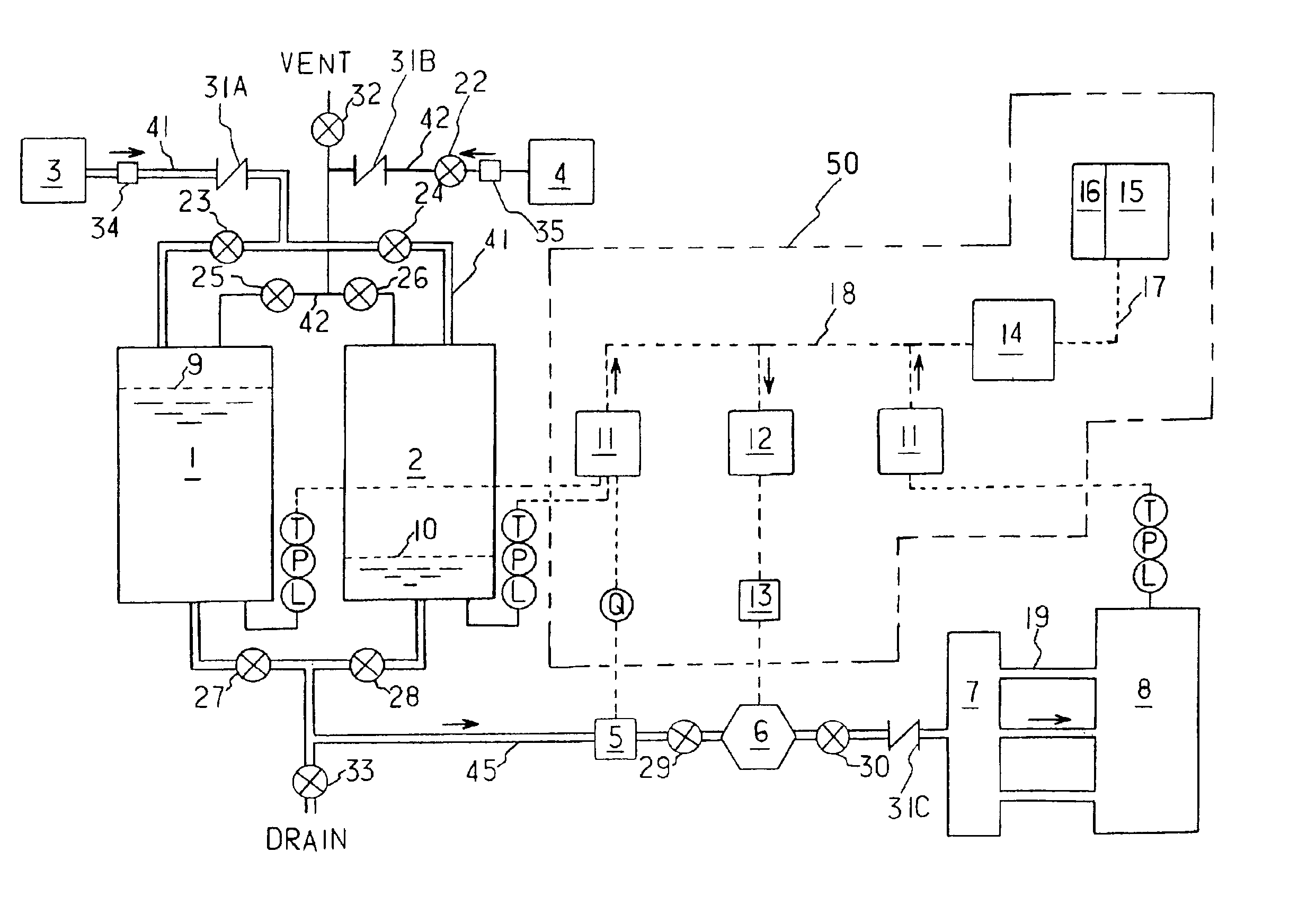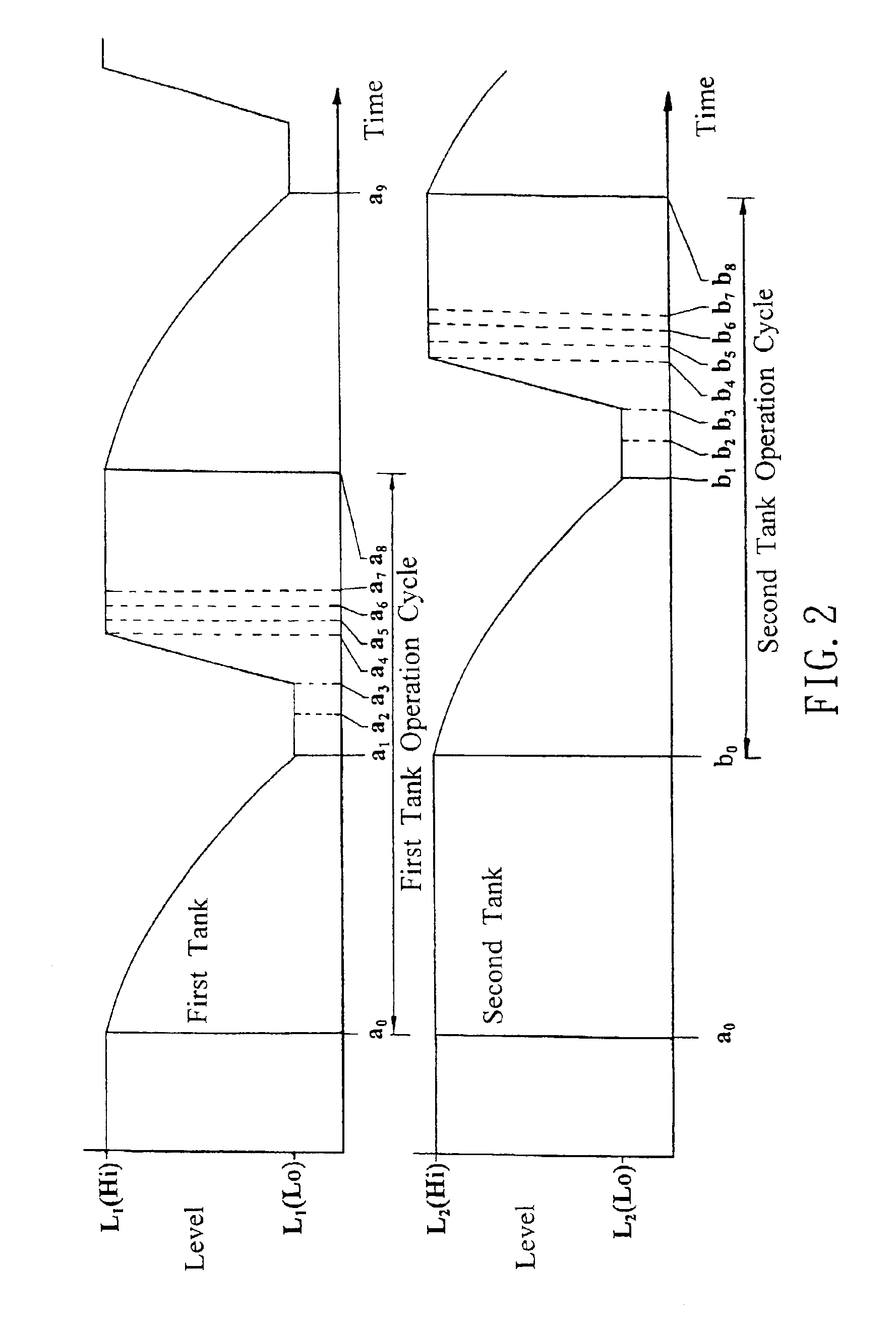Multifunction passive and continuous fluid feeding system
a fluid feeding system and multi-functional technology, applied in liquid transferring devices, process and machine control, instruments, etc., can solve the problems of failure of fluid-feeding function, more severe damage, and astonishing cost of investment only made in high-head pumps
- Summary
- Abstract
- Description
- Claims
- Application Information
AI Technical Summary
Benefits of technology
Problems solved by technology
Method used
Image
Examples
Embodiment Construction
[0029]As mentioned above, the object of the present invention is to provide a kind of multifunction passive and continuous fluid feeding system, which is of simple structure and high reliability, for external systems, wherein the system is capable of performing multifunction fluid feeding skills for automatic operation, continuous fluid feeding, and flow rate control based on various fluid-feed requirements by the external systems. Besides being highly reliable and capable of lowering disaster risks, the present invention has the advantages of cost effectiveness, energy saving, environmental friendliness, and convenience for maintenance and performance testing, as well as the potentials of extending applicability into various fields. The descriptions below are illustrative of the embodiments of the present invention.
[0030]FIG. 1 is a characteristic diagram showing the equipment and system controls of the present invention. The equipment comprises a storing and transmitting component...
PUM
 Login to View More
Login to View More Abstract
Description
Claims
Application Information
 Login to View More
Login to View More - R&D
- Intellectual Property
- Life Sciences
- Materials
- Tech Scout
- Unparalleled Data Quality
- Higher Quality Content
- 60% Fewer Hallucinations
Browse by: Latest US Patents, China's latest patents, Technical Efficacy Thesaurus, Application Domain, Technology Topic, Popular Technical Reports.
© 2025 PatSnap. All rights reserved.Legal|Privacy policy|Modern Slavery Act Transparency Statement|Sitemap|About US| Contact US: help@patsnap.com



